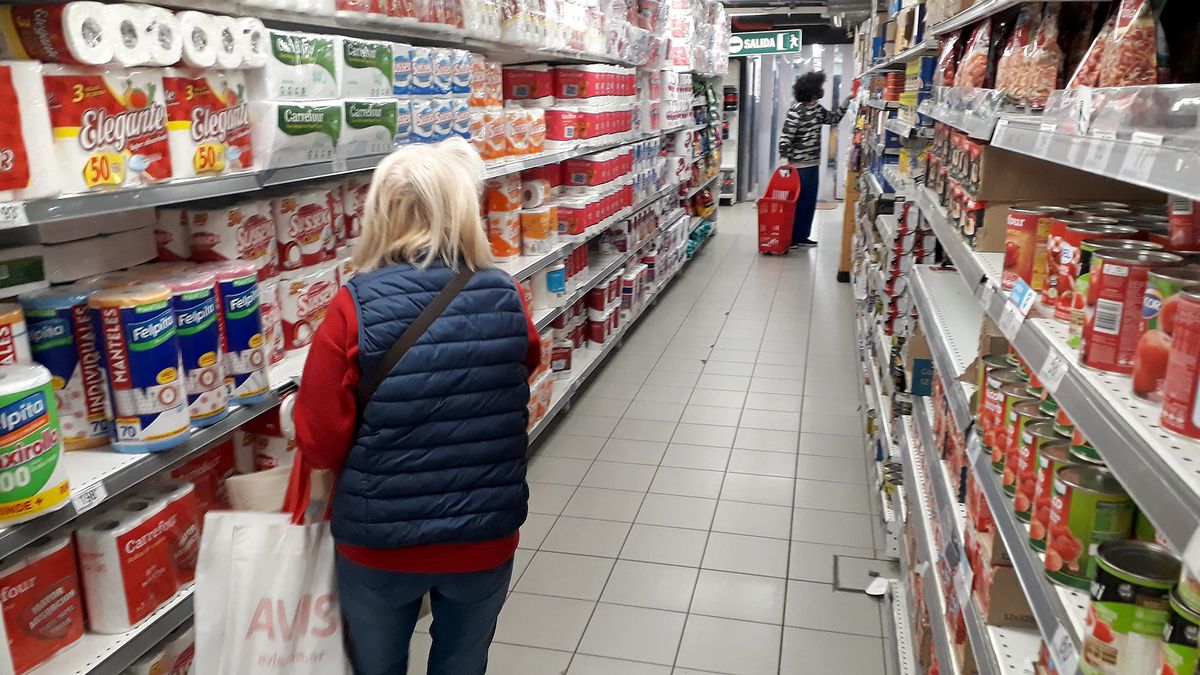This stagnation in consumption can condition the growth of exercise that was planned for this year. According to the latest Survey of Market Expectations (REM) carried out by the Central Bank, GDP growth of 3.5% is estimated for this year. The program with the Fund, in fact, foresees an expansion of between 3.5% and 4.5%.
In March, the economy contracted 0.7% monthly, according to INDEC. For April, according to the General Activity Index prepared by the consulting firm Orlando Ferreres, it could be expect a 0.5% advance. Regarding the prospects for the coming months we can’t be optimistic”, they remarked from the firm, and explained: “Inflation continues eating away at income and the consumption capacity of families, and the Government is unable to apply effective economic policies to deal with rising prices, nor is it managing to accumulate dollar reserves, and the goals agreed upon with the IMF already seem difficult to meet. In the coming months we could see greater restrictions on imports and tensions in terms of energy availability. In this context, it is natural to anticipate that the activity will enter a period of stagnation.”.
Along the same lines, from LCG they pointed out that, “since consumption represents on average 70% of GDPwith accelerating inflation, This variable will hardly be the engine of growth during 2022; especially in a context where wage increases are quickly eroded by rising prices”. That is why the consulting firm projects a slowdown in activity in the second part of the year, which will result in a growth of the economy of “no more than 2%” this year. Figure that would respond, they clarify, to “statistical drag” which left 2021.
Street-Florida-Promotions-Consumption-Pedestrian-Shops-Textile
The fall in consumption can impact the expected growth of the activity
Ignatius Petunichi
Drivers are weakened
Along the same lines, from the consulting firm Ecolatina they analyzed that in the coming months “the risks of the drivers weakening that explained the recovery of purchasing power and therefore of the consumption”.
“To begin with, the marked inflationary accelerationwhich since the second half of 2021 was counterbalanced in terms of income by the reopening of joint ventures, possibly start to make a dent in purchasing power going forward: the jump at the beginning of the year and the prospects of high records for the coming months, may put in check the continuity in the recovery of disposable income”, said the firm, which highlighted: “Despite the loose joint agreements and the recent bonuses to lower-income sectors, the rise in prices makes a scenario where the real recovery of income is cut short more feasible and salaries started at the end of last year”.
In addition, they highlighted that the instrumentation of the agreement with the IMF It will also “block” the drivers that have boosted consumption in recent times, through “four ways”. On the one hand, the rate adjustment energy puts a high floor on inflation, hitting disposable income; the goal of fiscal deficit “limits the expansive bias of fiscal policy to boost demand”; Besides, the rise in interest rates makes consumer credit and investment more expensive; and finally the reserve accumulation goal “It puts a limit on the level of imports that can be paid with the current level of foreign currency supply, added to the jump in global inflation, the increase in freight costs and the overheating of the tourism deficit.”
Massive consume
In that context, the cmass consumption could also be affected in the coming months, although the fall in purchasing power will not hit the same way all the channels. “I think that what the parity, the bonuses and the reinforcements that are going to be given, including the increase in pensions, are going to allow consumption to grow in the case of wholesalers and large commercial areas. And it will slow down a bit in self-services and nearby businesses. It will also depend a lot on the acceleration of prices that we see in the mass consumption categories. But what we see is that the purchasing power was greatly eroded”, told Ámbito Damián Di Pace, director of the consulting firm Focus Market.
In fact, according to the report made by the firm via Scanntech (code reader in 670 points of sale throughout the country), mass consumption fell 8.7% year-on-year in April, to accumulate a contraction of 3, 1% compared to the same period of the previous year.
Source: Ambito
David William is a talented author who has made a name for himself in the world of writing. He is a professional author who writes on a wide range of topics, from general interest to opinion news. David is currently working as a writer at 24 hours worlds where he brings his unique perspective and in-depth research to his articles, making them both informative and engaging.




